Nanjing is a perfect destination to experience China’s rich history, cultural heritage, and natural beauty, especially if your time is limited.
As the ancient capital of 10 dynasties, and the only one of China’s 'Four Great Ancient Capitals' situated along the mighty Yangtze River, Nanjing offers a unique blend of historical significance and scenic splendor.
The city harmoniously combines mountains, rivers, lakes, and plains, embodying the principles of good feng shui. This natural bounty provided both defense and prosperity for the dynasties that ruled here, and for centuries Nanjing was a hub of economic, political, and cultural activity, shaping China’s history in profound ways.
As a result, the city is home to numerous heritage sites, including the Ming Xiaoling Mausoleum, Confucius Temple, and ancient city walls; breathtaking landscapes, such as Purple Mountain and Xuanwu Lake; as well as boasting intangible cultural heritage, such as Yunjin brocade and traditional arts like paper cutting and velvet flower-making.
With its unique blend of past and present, Nanjing is a city that truly captures the essence of the nation. Here are just a few of the highlights.
Nanjing City Wall

Image via WikiCommons
A remarkable and imposing structure, Nanjing City Wall is the longest city wall in the world. Built in the Ming Dynasty (1368-1644 AD), it still stretches for 25 kilometers today.
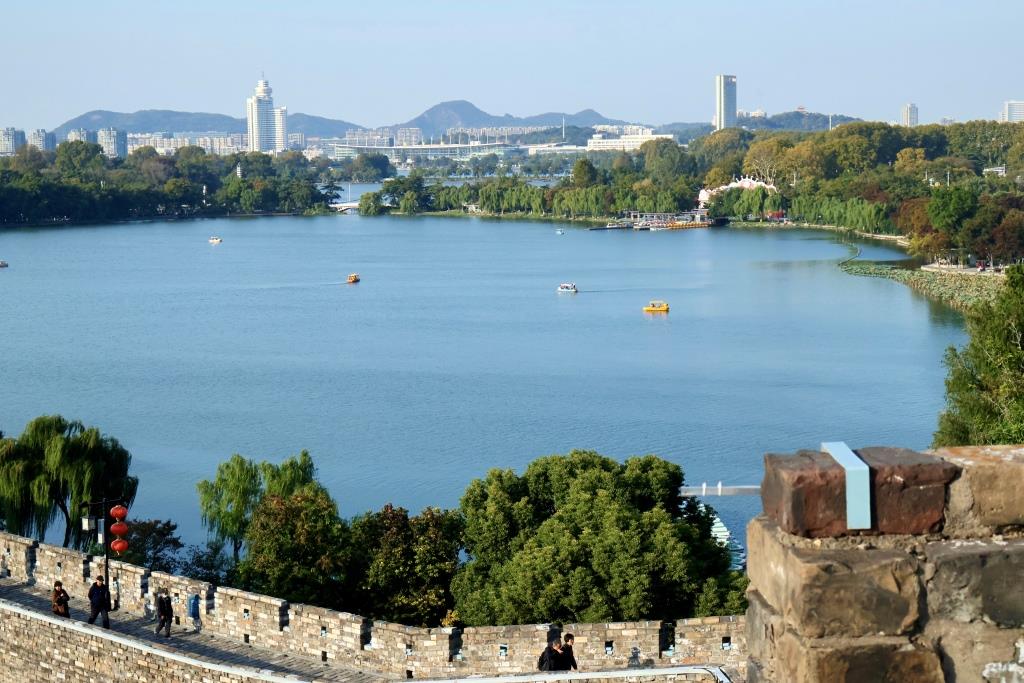 Image by Christy Choi/That's
Image by Christy Choi/That's
Climbing up the wall, you’ll be treated to a breathtaking view of Xuanwu Lake and Zijin Mountain. The surrounding landscape, with it’s harmonious blend of mountains, lake, forests and urban areas encompasses centuries of history.
Ming Xiaoling Tomb

Image via zschina.nanjing.gov.cn
Serving as the resting place of Emperor Zhu Yuanzhang (reigned 1368-98), the first emperor of the Ming Dynasty, and his empress Ma, the Ming Xiaoling Tomb, is one of the largest surviving imperial tombs in China.
Despite enduring over 600 years of history and the elements, it remains remarkably grand and awe-inspiring, and a UNESCO World Cultural Heritage site.
To reach the main Ming Xiaoling Tomb, you need to walk along the first section of the Sacred Way, Shixiang Road, which is lined with six types of stone beasts.

Image via zschina.nanjing.gov.cn
The animals were carved from massive blocks of stone using round carving techniques, featuring smooth and rounded lines, grand presence, and a rugged style.
They not only signify the majesty, sanctity, and splendor of the imperial tomb, but also serve as symbols of ceremonial significance and protection, warding off evil.
The scenic areas around the tomb, including Plum Blossom Hill and Zixia Lake, are also well worth checking out.

Image by Fabio Nodari
Two kilometers northeast of Ming Xiaoling Tomb, you will find Yun Yat-sen’s mausoleum. As the architect of modern China, he is revered as the 'Father of the Nation,' and visitors to his tomb honor him as such.
Fuzimiao Qinhuai River Scenic Area
Image by Christy Choi/That's
The Qinhuai river adds a touch of poetry to Nanjing. The Fuzimiao (Confucius Temple) Qinhuai Scenic Area is a major tourist destination that beautifully combines natural landscapes, classical gardens, historic temples and the China Imperial Examination Museum, as well as traditional street residences and local customs.
Image by Christy Choi/That's
It’s always busy on this street, so the best thing to do is an evening boat ride, from which you can see the all the scenery mention above, but also avoid the crowds.
Image by Christy Choi/That's
Illuminated on at both side of the banks, you can imagine the prosperity and resplendency of the old times.

Image by Christy Choi/That's
If you are interested in a bit of Han cosplay, you can also rent a set of clothes, with many shops offering hair buns, makeup and traditional Chinese attire, all adding to that feeling of being transported back to ancient times at this historic site.
Niushou Mountain – A Holy Land
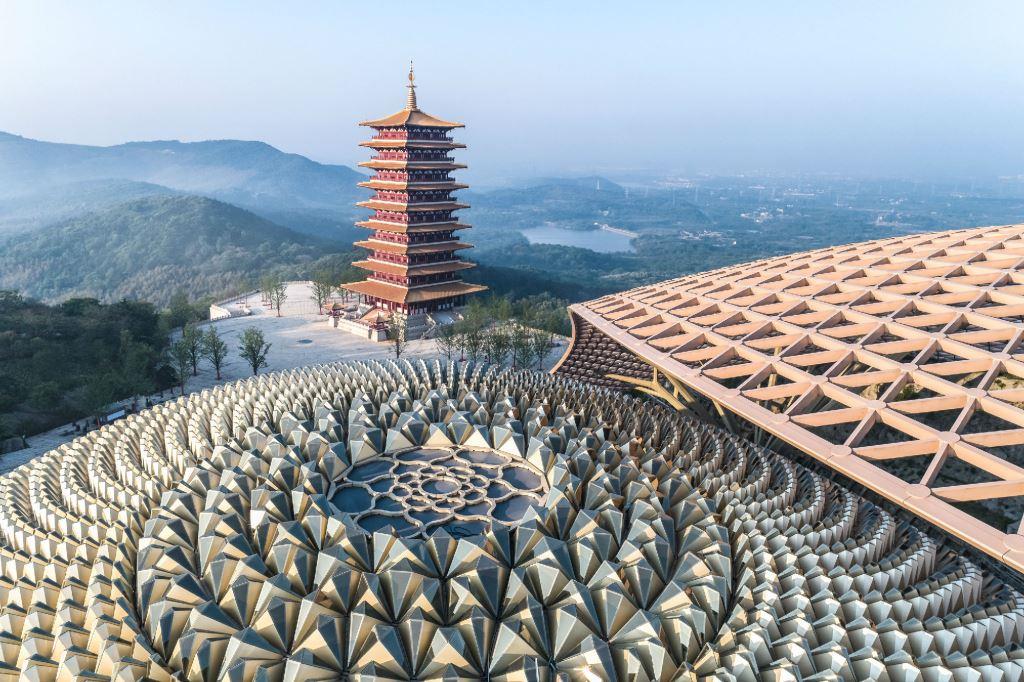 Image via www.njyjmuseum.com
Image via www.njyjmuseum.com
Niushou Mountain is the birthplace of Niutou Zen, a branch of Chinese Zen Buddhism. Over thousands of years, diverse cultures have merged here, and the profound Buddhist and Zen roots have added splendor to the landscape of Niushou Mountain and enhanced the luster of its pagodas and temples.
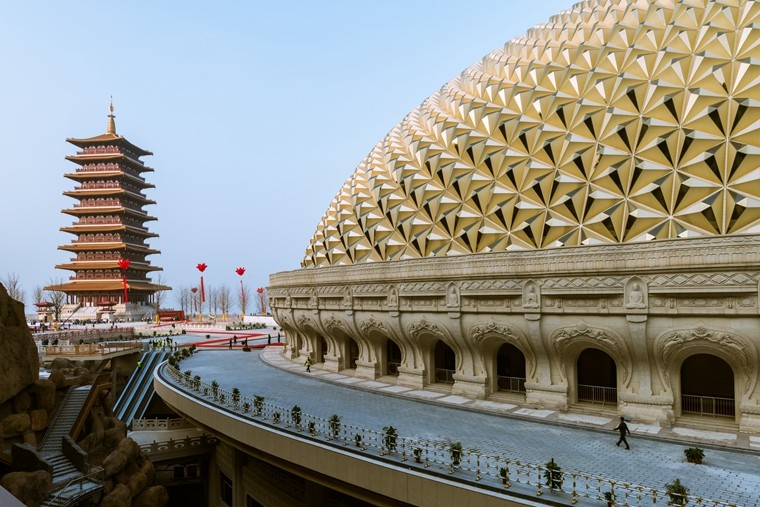 Image via www.njyjmuseum.com
Image via www.njyjmuseum.com
The Usnisa Palace, or Foding Palace, stands as an extraordinary architectural and spiritual marvel built to enshrine and worship the sacred śarīra (relics) of Sakyamuni Buddha.

Image by Christy Choi/That's
Nestled on the west peak of Niushou Mountain, this immense subterranean structure is a testament to Buddhist devotion and exquisite craftsmanship.

Image via www.njyjmuseum.com
The palace spans 220 meters in length, 160 meters in width, and rises some 90 meters in height, covering a staggering 136,000 square meters of building area that integrates harmoniously with the mountain, blending architectural ingenuity with natural elements.

Image by Christy Choi/That's
The large dome, 120 meters long, resembles a kasaya (Buddha’s robe), symbolizing protection for the śarīra, while the small dome, representing Buddha’s head or two devoutly joined palms, reflects the piety and support of Buddhism’s followers.

Image by Christy Choi/That's
Interior features include a lying copper statue of Sakyamuni Buddha – 9-meter-long reclining Buddha, adorned with a surface resembling white marble, resting under the shade of Sala tree branches.

Usnisa Worshipping Palace. Image via www.njyjmuseum.com
The Thousand-Buddha Hall serves as the core of the palace, housing the Great Stupa of Usnisa which, towering at over 20 meters, is modeled after the overhanging Mount Sumeru, symbolizing the Avatamsaka realm – a pure and sacred Buddhist world.
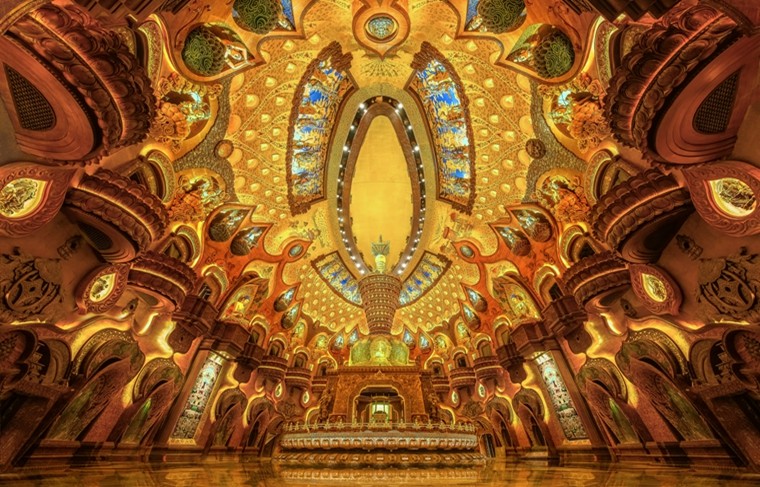
Thousand-Buddha Hall. Image via www.njyjmuseum.com
The stupa is richly adorned, radiating an awe-inspiring golden magnificence.
The architectural brilliance, coupled with profound spiritual symbolism, makes Usnisa Palace not only a sacred Buddhist site, but also a place of wonder for people from all walks of life, regardless of their faith.
It beautifully conveys the themes of devotion, protection, and enlightenment through its structure and design.
Nanjing Yunjin Brocade Museum

Image via www.njyjmuseum.com
Nanjing, a city rich in culture and history, boasts an impressive collection of 196 intangible cultural heritage items.
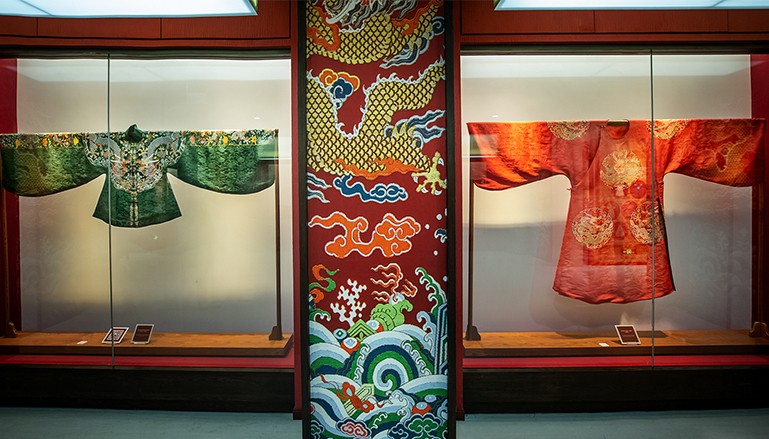
Image via www.njyjmuseum.com
Among them, Yunjin (云锦), or 'cloud brocade,' stands out as one of the most exquisite and representative examples of traditional craftsmanship.
Here are a few Yunjin fast facts...
Premium Materials: The creation of Yun brocade involves luxurious materials such as mulberry silk, gold, silver, and even peacock feather threads, contributing to its high value and unique texture.
Labor-Intensive Process: The weaving process is painstaking and requires two weavers working in perfect harmony on a traditional loom. Due to the intricate patterns and techniques, only five to six centimeters of brocade can be produced in a single day.

A Yunjin loom. Image via www.njyjmuseum.com
Unmatched Craftsmanship: Yunjin is renowned for its technique of creating the same flower with different color patterns, a skill so complex that even modern machines cannot replicate it. This craftsmanship highlights the ingenuity and artistry of human creativity, preserved through generations.
Symbolism and Value: The saying “an inch of Yun brocade, an inch of gold” (一寸锦,一寸金) aptly captures the value and rarity of this art form. Each piece of Yun brocade is not just fabric but a masterpiece embodying traditional Chinese aesthetics and cultural heritage.
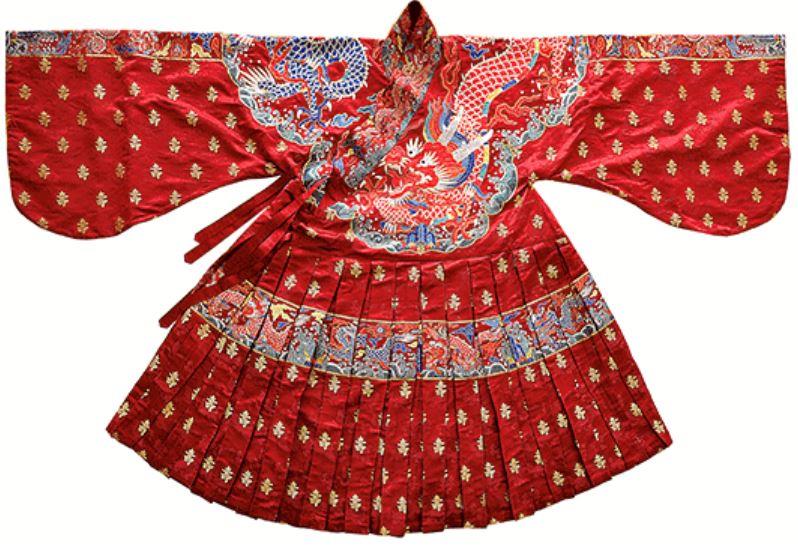
Image via www.njyjmuseum.com
Yunjin is more than just a textile – it’s a living testimony to Nanjing’s rich cultural legacy and the dedication of its artisans; its intricate designs and painstaking production process make it a symbol of the timeless beauty of Chinese craftsmanship.
Deji Art Museum

Nanjing is a city that masterfully blends tradition with modernity, and nowhere is this more evident than at the Deji Art Museum.
Among its many exhibits, the standout attraction is the innovative digital presentation of the Qing dynasty painting An Era in Jinling.
Created in the late 18th or early 19th century, the artwork is celebrated as an encyclopedic portrayal of Jinling’s history, culture, and folk customs in its heyday.
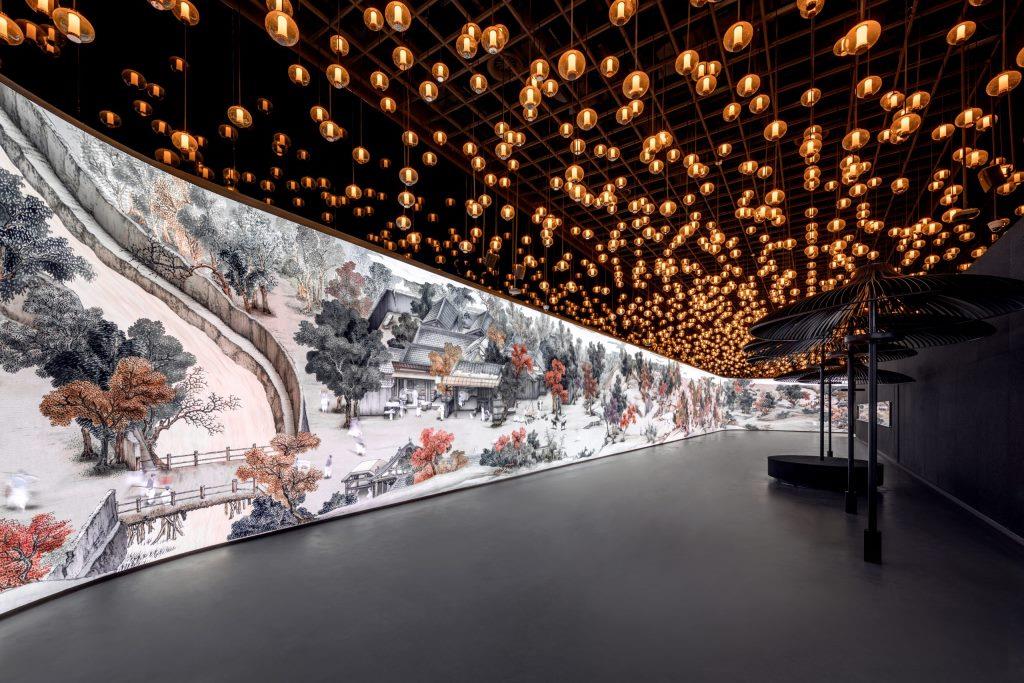
Highlights of the exhibition include the original painting having been magnified 100 times and projected onto an impressive 110-meter-long by 3.6-meter-high screen, offering an unprecedented level of detail and immersion.
Using cutting-edge intelligent technology, the exhibition brings the dynamic cityscape of Jinling to life, allowing visitors to explore its vibrant streets and bustling activities in real time, and even using their smartphones to select and control a character within the digital painting.
By allowing participants to 'step into' Jinling’s golden age, the exhibit on exemplifies how technology can revitalize historical art, offering new ways to appreciate and interact with cultural heritage, and making it accessible and engaging for people of all ages.
The Food
Exploring a city’s food scene is an essential way to experience its culture. Nanjing is a feast for the senses, and its culinary offerings are a major part of its charm.
Here are just a few Nanjing delicacies to try...

Duck: Salted Duck (Yanshui Ya) is signature dish of Nanjing, known for its delicate, savory flavor and tender texture.
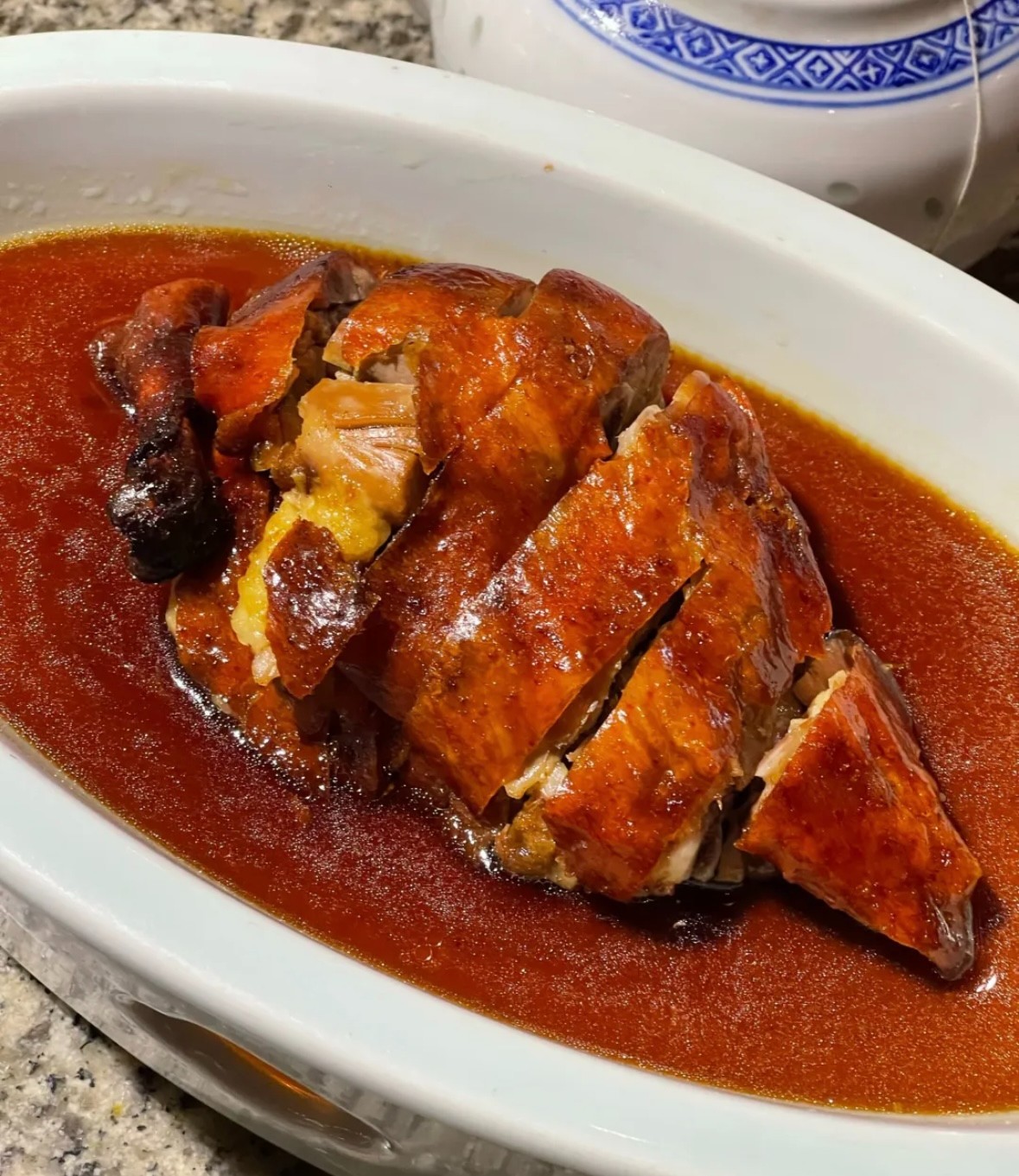
Nanjing also has a must-try Roasted Duck variation, celebrated for its crispy skin and rich aroma.
Guotie Dumplings: Pan-fried, crispy on the bottom, juicy on the inside – these dumplings are a perfect snack or meal.
White Fish: A fresh and flavorful local specialty often served steamed or braised.
Xiaolongbao: These delicate soup dumplings, filled with savory broth and meat, are no stranger to residents of Shanghai, and also a Nanjing favorite.
The great place to sample Nanjing’s iconic cuisine is Nanjing Da Pai Dang, a restaurant chain offering a nostalgic atmosphere and authentic local dishes. With multiple branches around the city, it’s a convenient stop for food lovers.
Plan Your Nanjing Visit
With its perfect mix of history, culture, modernity, and amazing food, Nanjing is an irresistible destination. The city is very foreigner-friendly, with information and ticket booking available in English through their official website.
For travel inspiration and tips, follow #GoToNanjing on Instagram.








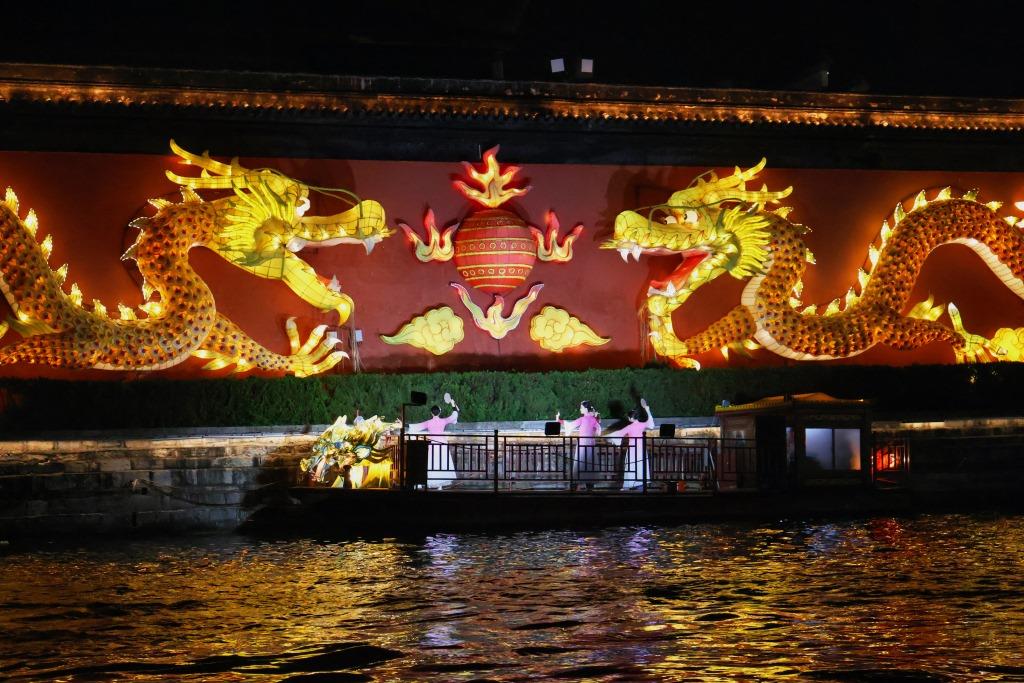
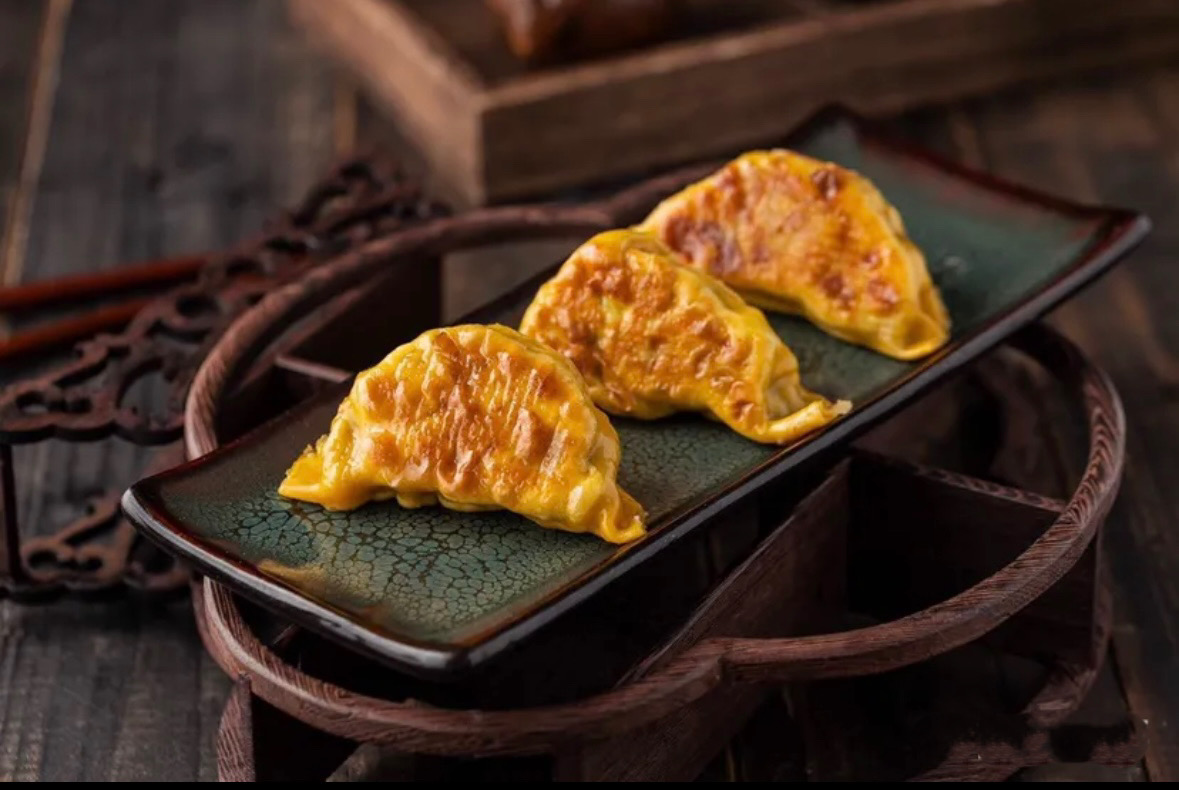
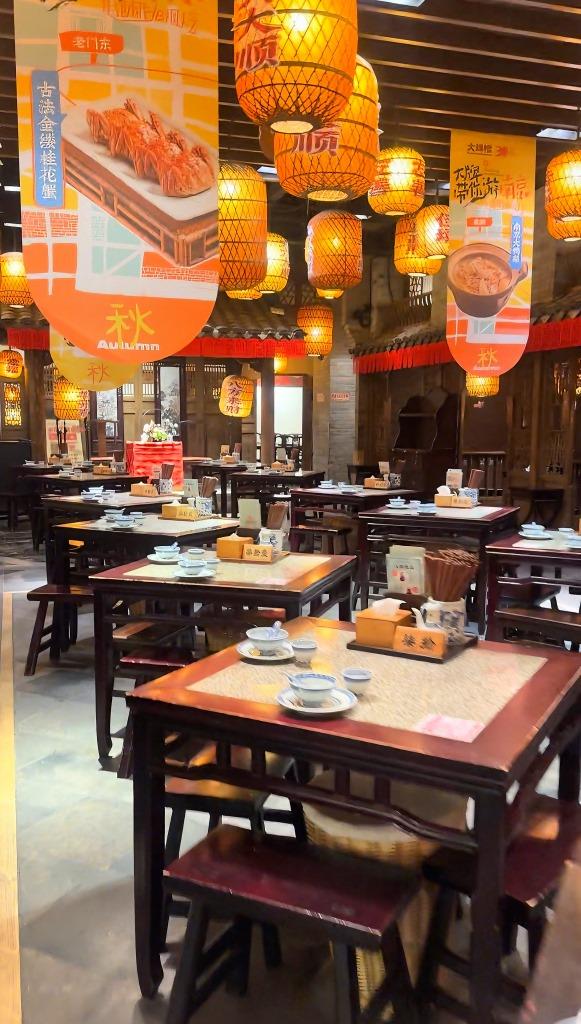














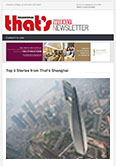

0 User Comments